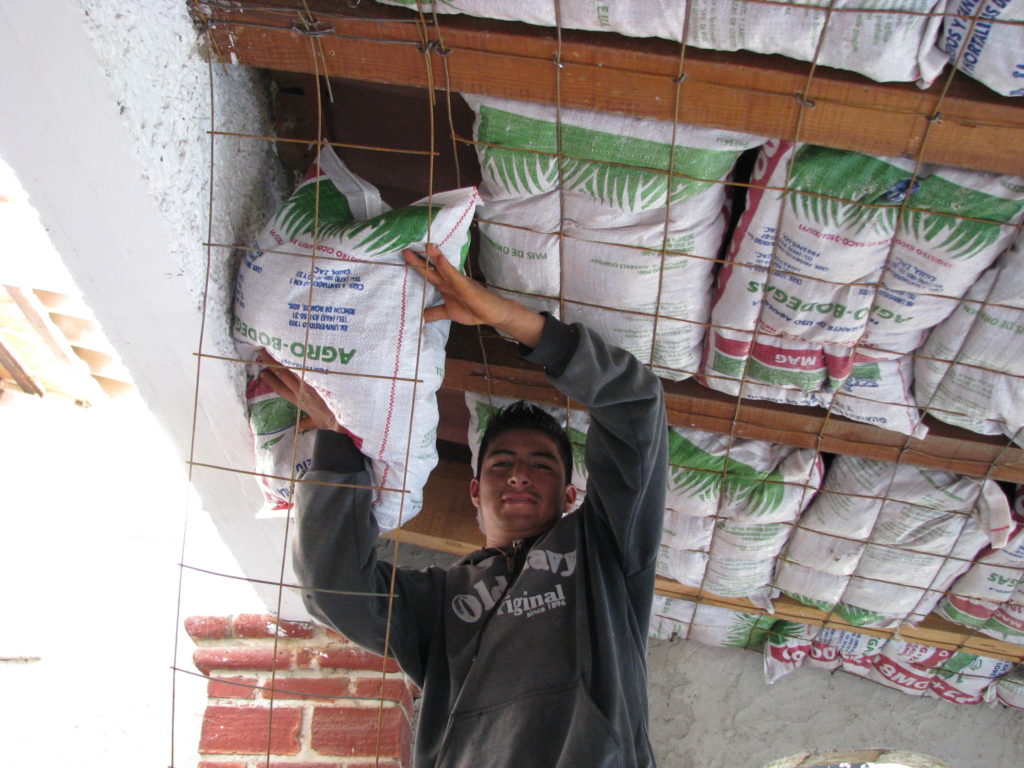I got this email from Leeann and Cody Gantz:
“I am writing to you from central Montana at the foothills of the mountains. Garden zone 4b. Very high wind area. Negative 35 degrees F is very possible here.”
“I wanted to share some information for anyone who may be interested. We bought a small cabin shell and finished the interior ourselves. We used earthbags filled with free sawdust as insulation (a mix of any and all central Montana tree species). We stuffed the bags between the studs as you would normal store bought insulation. The wall studs are 2×4, roof is 2×6. It works perfectly, we stay toasty warm with just a wood stove for heating and the 3.5″ of sawdust. We can be gone all day in winter and come home to a warm home long after the fire has gone out. We spent around $100 total on insulation. *We did make our interior siding easy to remove to allow for inspection of the bags. So far the bags are in perfect shape after 2 years.”
“I know that sawdust insulation is not a new idea but a rather outdated one unfortunately. The owners of the sawmill really tried to talk us out of using the sawdust. They were sure that we were going to be living with bugs and critters or immediately burn to the ground because of a lack of fire retardants in our walls. (None of this has been an issue thus far). We used red volcanic rock in the ceiling around the wood stove pipe rather than dust bags.”
“We just purchased more bags to begin an earthbag cistern below ground. I hope the cistern works out as well as the insulation has. Thank you for sharing your knowledge and happy building, happy experimenting!!”
I would just add to their comments that I am familiar with the use of sawdust mixed with some dry powered hydrated lime as a central insulation layer between the mortar joints of cordwood masonry walls. The lime will help mitigate the possibility of mold, rot or fire; in fact if it ever gets moist, it will just turn to solid lime over time.


I have a septic tank 4’ bury. I put two culvert up rights and each manhole. Backfilled. I want to use the sawdust from my sawmill to insulate on top of the two culverts. I can get -30 degrees. Wish me luck.
RE: safety and pest control:
Mix with borates to minimize fire hazard. At the same time, mix with some gypsum or cement. This combination is hostile to rodents, preventing them from nesting in the bags of sawdust. You may need to install a vapor barrier to keep moisture from interacting with the cement/gypsum.
What an ingenious way to to employ a supposed “waste” material. Further experimentation can resolve questions about fire retardants and insect control.
I wonder if , as with newspaper pulp blown in insulation , it could be made ( using an environmentally safe method ) fireproof and insect proof…I know that Borates can make wood termite, fungus and carpenter ant proof..One down.They sell treated wood with Borate in the South…..The next would be to find an environmentally safe fire proof method..Any ideas out there from anyone reading this….on the fire proofing?..THEN YA GOT A WINNER!!!!
According to one source I found: “The borate treatment gives the cellulose insulation a very high fire safety rating in terms of combustibility. From a safety standpoint, that’s good news. As a line firefighter trying to deal with a fire in cellulose insulation, that’s not so good news. The low combustibility of the cellulose makes it easy for fires to start, but the fire retardant treatment doesn’t allow them to grow quickly, so they can continue to smolder.”
this is so great to hear. the use of free sawdust to keep their home warmly insulated is a testament to the wisdom that we can care for ourselves nicely whilst caring for the earth.